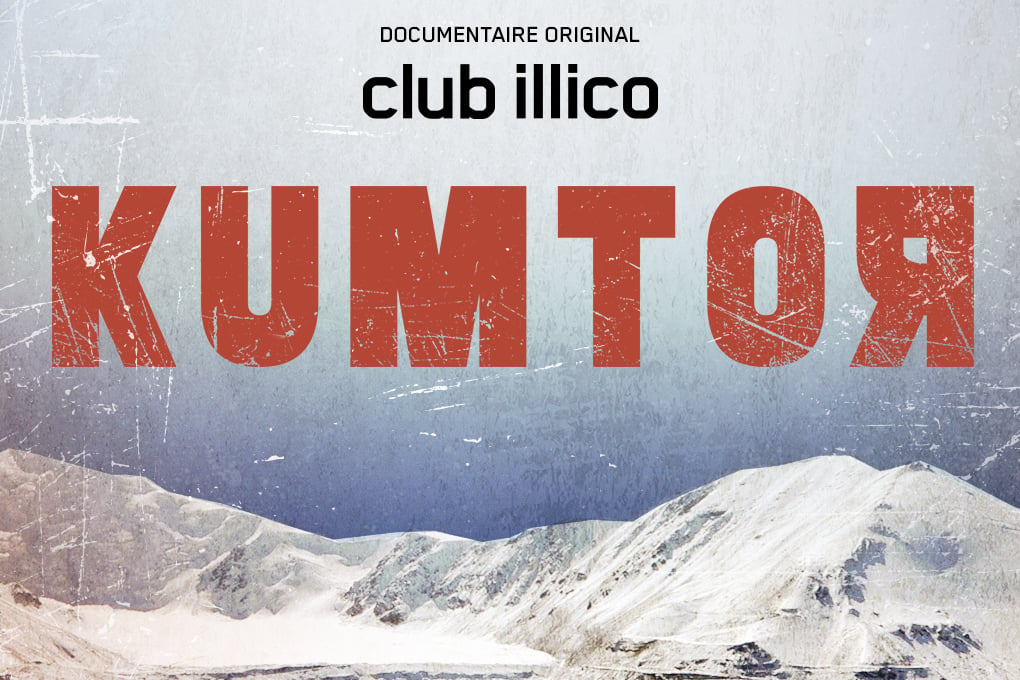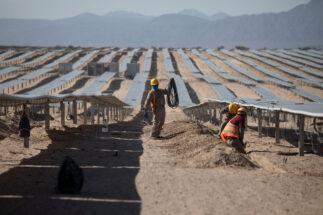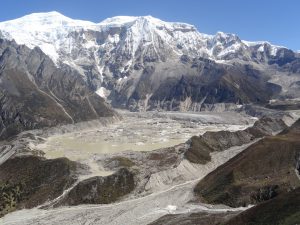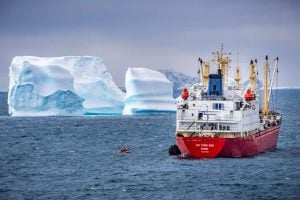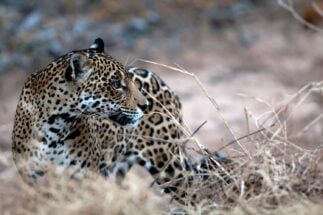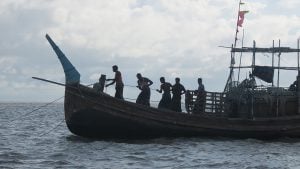Canada has an excellent international image. So much so that many tourists, especially Americans, put Canadian flags on their backpacks in the hope of receiving better service when abroad. In their documentary Kumtor, Brigitte Noël and Matt Joycey, a Canadian journalist-director duo, take us to one place on the planet where this does not hold true: Kyrgyzstan.
Kumtor, a French-language documentary film released in 2020, tells the story of the Kumtor gold mine in Kyrgyzstan, which is owned and operated by the Canadian mining company Centerra Gold. Produced by Canadian media company Quebecor’s investigative division, Bureau d’Enquête, it has been nominated to two of the Canadian cinema and television academy’s Prix Gémeaux under the categories “Best documentary: nature, science and environment” and “Best scenario: feature documentary”.
Noël first learnt about Kumtor in 2015 after a conversation with independent Kyrgyz journalist Ryskeldi Satke (disclosure: Satke recently joined The Third Pole as its Central Asia editor). As Noël put it, “[the story] haunted me for years until I was finally able to go [to Kyrgyzstan]”. In a conversation early on in the film, Noël asks Satke why he is helping her with the story, especially considering past threats and intimidation he faced when trying to cover these issues. He responds, “This story deserves to be covered and heard in Canada… It’s important to have people and villages tell their stories.”

The film opens with the production team racing away in their vehicle from the mine’s security services, hinting at the drama that is about to unfold. The rest of the documentary does not disappoint. Kumtor first sets the scene for a Canadian audience by explaining the country’s role as a global leader in mining, then gives some background on Kyrgyzstan – a distant country that many Canadians know little about.
Destruction, torture and corruption
Next, the story unpicks the layers of scandal around the mine.
It starts with the environment. The Kumtor mine is intimately connected to the destruction of glaciers that provide drinking water in this landlocked country: the gold deposits are under glaciers that need to be removed in order for the mining operations to take place. The mine is also responsible for pollution in the rivers, including an accidental spill in 1998 into the Barskoon river that led to the mass poisoning of villagers. Lake Petrov, located above the mine’s tailings (the ponds that contain the chemical waste resulting from mining operations) is at risk of overflowing as glaciers around it melt. If this happens, the lake will flood the tailings, which will in turn overflow and release their chemical waste into the country’s water system.

Kumtor next untangles the human rights story, detailing the jailing of various protesters over the years, with several still imprisoned, and allegations of torture and beatings. They include Nariste Kalchaev, an activist who describes being tortured at the hands of Kyrgyz security forces. As if this weren’t gripping enough in itself, Noël and Joycey add an additional layer of drama by highlighting the security issues that they themselves face as they try to produce this film. They regularly check to see if they are being followed and use encrypted disks for their interviews and carry dummy disks with fake interviews in case they are stopped and searched.
See: More than 1,700 activists have been killed this century defending the environment
The last area they attempt to explore is corruption. Allegations are rife, including of bribery by the Canadian company of Kyrgyz government employees that were exposed in a 2013 investigation. Creating a direct link or finding direct evidence proves impossible, with layers of secrecy and lack of cooperation by authorities. The film does, however, let the facts speak for themselves, showing pages and pages of heavily redacted documents Noël receives in response to an Access to Information request. The audience is left to draw its own conclusions.
The Canada question
Canada is a recurring theme, mentioned throughout, and it is in a way the underlying scandal. As Noël herself stated when asked about the film, “I have travelled extensively and have always proudly told people that I am Canadian… Kyrgyzstan is the first place where we felt like we were not welcome, where people actually grimaced when we told them we were Canadian.” Noël and Joycey clearly want their audience back home to understand that these scandals involve a company from their own country. The constant mentions of Canada also show their own bewilderment as citizens; Noël states in the film that “Canada is not only aware of the issue, but is actually helping the company.”
The Canadian government and the mining company stonewall Noël back in Canada. They refuse to talk to her on camera. Rather than letting that be the end of the story, the film goes through the recent history of how governing parties in Canada have blocked legislation that would mean Canadian mining companies can be held legally responsible for their activities outside the country. In 2010, the governing Conservative Party at the time blocked legislation tabled by a Liberal member of parliament. Then in 2014 the Liberal Party failed to pass a watered-down version of that same legislation.
A textbook case
Kumtor is a textbook case for many of the issues that arise around mining and the various tactics the industry uses to ensure it gets away with human rights and environmental violations. Noël and Joycey tell its story through the voices of the brave activists on the ground in Kyrgyzstan who have dared stand up to Kumtor, only to be let down by both Kyrgyzstan and the filmmakers’ home country.
For anyone looking to understand the environmental and human rights issues related to the mining industry; for anyone trying to get a grasp on the silent complicity of the Canadian government, this documentary is an excellent introduction. Kumtor manages to be gripping and dramatic without being sensationalist: it does not try to hide the fact that the situation is not black and white, it simply lets the facts speak for themselves – and the facts are indeed scandalous.
When asked what her key message to her Canadian audience is, Noël said that she was shocked at how Canada’s Ministry of Global Affairs dismissed the issues despite being fully aware of them. In her emailed reply, she said: “People are still in prison because of their opposition to Kumtor, glaciers are STILL being destroyed, but this has generated NO reaction from our government.”
The project was a revelation for Noël. “I now realise that in many parts of the world, in South America or in Africa, there are communities who resent our country for allowing this kind of resource extraction to occur.” It’s a story that deserves to be told not only to Canadians, but everyone.
I hope and recommend that Kumtor makes it into classrooms and on television sets across the country. This would not only help expose the scandal, but could mobilise the public to push for change.
‘Kumtor’ can be viewed online here
